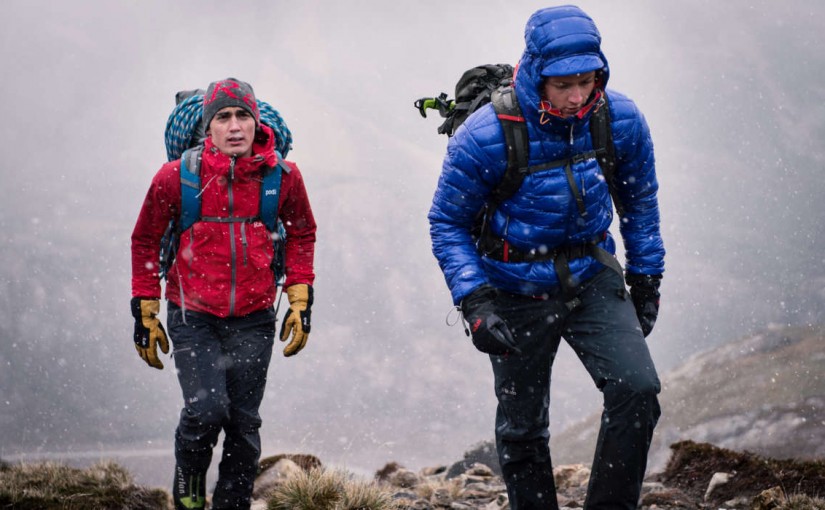Insulation Type
Down
• Down is harvested from the feathers found underneath a bird’s plumage. It provides the best weight to warmth ratio.
• It can compress extremely small and retain its loft (insulating power) longer than synthetic.
• Down is rated by its fill power (i.e. 500-900+), which is a calculation of how many cubic inches 1 oz of down can fill. As the fill power increases so does the amount of air an ounce of down can trap, thus the more insulating ability an ounce will have.
• The main issue of down is its inability to dry quickly. When wet, down loses more warmth than synthetic. New technologies are increasing downs’ ability to remain warm when wet, such as Mountain Hardwears’ Q-Shield down.
Synthetic
• Synthetic insulation is basically a man-made imitation of down.
• It is usually constructed from polyester.
• It dries much faster than down and also retains much more warmth when wet.
• Synthetic insulation is heavier than down and more difficult to compress and pack.
Shell Type
Hard Shell
• Hard shells are a great choice when fighting the elements.
• They are windproof, waterproof, and breathable. Because of these features, they are more expensive than soft shells.
Soft Shell
• Soft shells are ‘softer’ versions of hard shells.
• They are not windproof or waterproof, but they are water repellent and wind resistant. Meaning, they won’t keep you very warm with intense winds or downpours, but they will keep you comfortable in average wind and drizzles.
• They are inexpensive and don’t restrict your bodies range of motion.
Types of Jackets
Fleece Jackets
• Fleece jackets are made from synthetic insulation to mimic pile wool. This soft, fuzzy fabric is durable and holds your body heat.
• Polyester fleece resists moisture and dries quickly.
Rain Jackets
• Rain jackets are made of fabric that is treated to repel water and keep you dry.
• These jackets have a lighter weight and do well in the high mountains and running around town.
Alpine Jackets
• Alpine jackets use a hard shell that is waterproof and more breathable than rain jackets and more durable.
• This powerful combination makes them more expensive but more versatile for colder and wetter conditions.
Ski Jackets
• Ski jackets are similar to alpine. They use a hard shell that keeps you dry from the elements and are breathable, which helps ventilate interior moisture (sweat).
3 in 1 Jackets
• 3 in 1 jackets are the most versatile.
• They are made of an insulating liner, down or synthetic fill, and a shell.
• They can be broken down and used separately or combined for rough weather conditions.
Soft Shell Jackets
• Soft shell jackets have a lighter weight and are weather resistant (not weather proof).
• They will keep you comfortable in moderate conditions and are highly breathable for active uses.
Wind Jackets
• Wind jackets are extremely lightweight and can compress down to fit easily in a pack (or even a pocket!).
• Great idea for layering and provide protection against wind and rain.
Casual Jackets
• Casual jackets are great for moderate conditions, with a higher focus on style. Great to wear around town.
